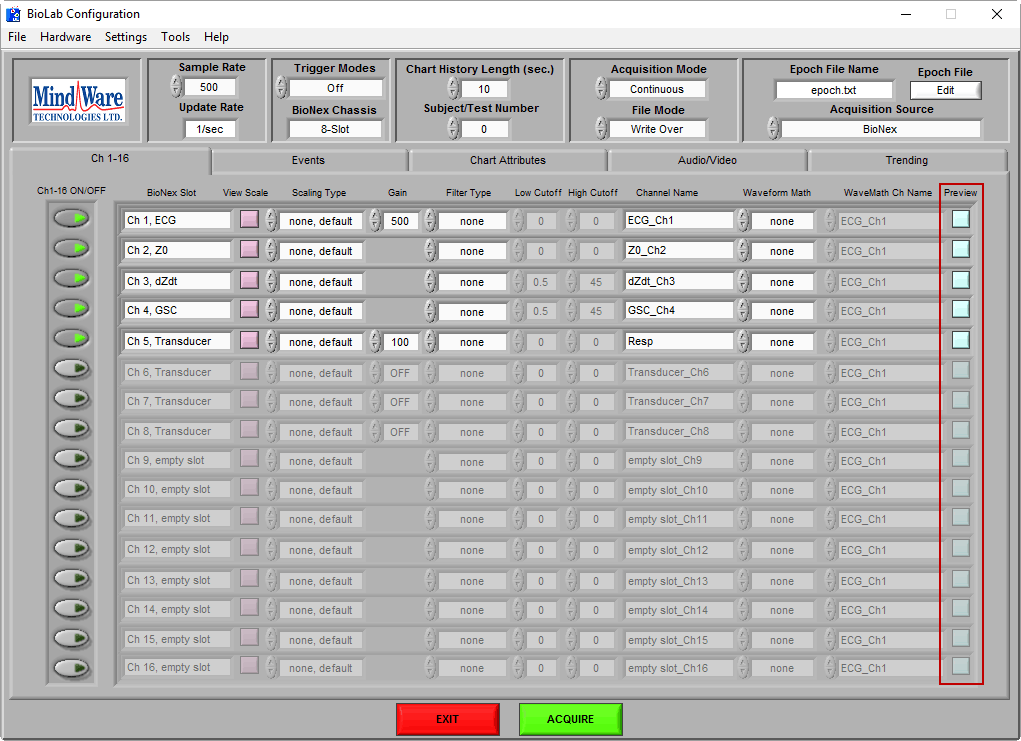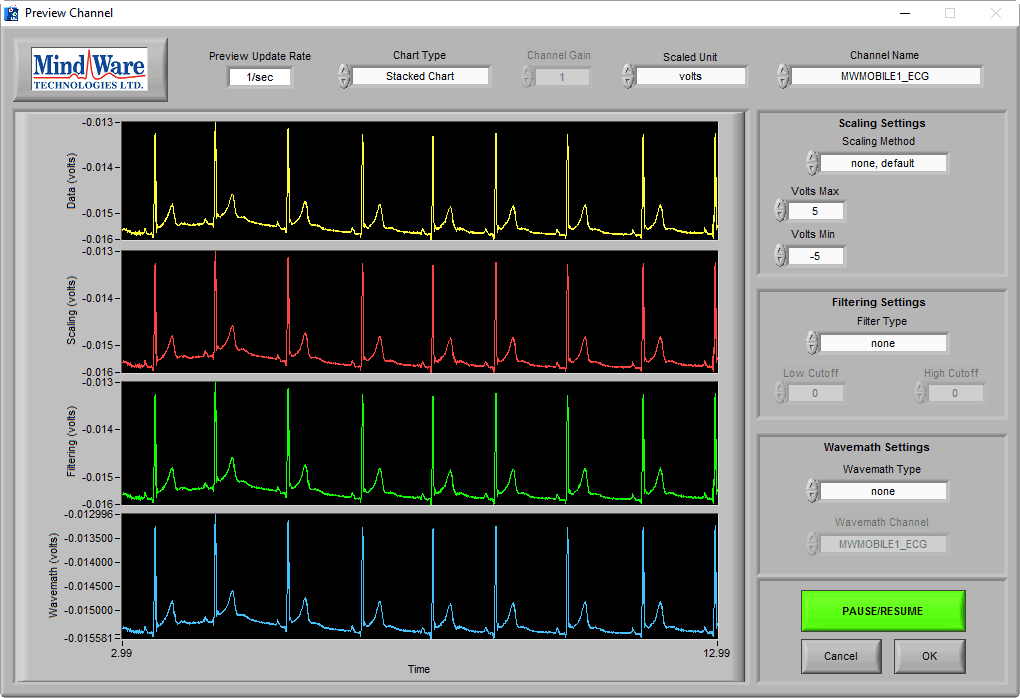Collecting good quality data is fundamental to every study. Poor data quality can result in hours of additional work in post processing and, in the worst case scenario, the need to discard an entire epoch/session/subject. Discarding a subject often means not only lost data, but also lost time and financial investment. Luckily this can all be avoided by becoming familiar with several key components of data acquisition:
- Supplies, equipment, and software used to collect data
- Proper data collection techniques including electrode placement
- Basic signal morphology to recognize “good data” vs “bad data”
- Troubleshooting techniques for common data collection problems
This collection of articles aims to teach those skills using some commonly acquired physiological signals. The first step in improving data quality is understanding the supplies, equipment, and software that are used to collect the data.
Pre-Experiment Considerations
Before starting data collection, it is a good idea to gather all necessary supplies that will be needed for the type of study you are conducting. This is recommended for a couple of reasons:
- Having equipment gathered and ready to go means you won’t need to spend time trying to set it up while the subject is present, allowing you more time to focus on what really matters at that point – ensuring good quality data is being collected
- Often times supplies used for data collection have a shelf life, and using expired consumables (such as electrodes and gels) is a leading cause of poor quality/unusable data. The time to replace expired or soon-to-expire supplies is long before the subject arrives for data collection, so be sure to be aware of the expiration dates on these supplies
For a more in-depth look at some of the different supplies needed for data acquisition, check out this video on the topic.
Lab Equipment
The next step in ensuring good quality data collection is to become familiar with the equipment in your lab. Knowing and understanding the difference between leads and a subject harness will help to troubleshoot signal issues as they arise. Being able to identify where data is being recorded (whether by a BioNex or MindWare Mobile) and how it works will help you trace the problem from subject to recording hardware. Being able to accurately identify the systems is useful in searching the Knowledge Base for a potential solution to a problem with that recording hardware, and in the event that you need to contact MindWare support it will expedite the support process.
Data Collection Software – BioLab
BioLab is the data collection software from MindWare Technologies, and it is critical that you understand how to use it to collect good quality data. Typically settings remain consistent throughout a study, but knowing some key functions in BioLab will help identify and correct for problems with data collection that can arise. For an in-depth tutorial on BioLab, check out the BioLab Fundamentals webinar series (Part 1, Part 2, and Part 3).
Previewing Data
Since we are primarily concerned with identifying any signal quality before data is collected, we are going to be looking at signals on the Preview screen in BioLab. Previewing is a step that is too often skipped, but should always be a part of the data acquisition process. If the data is problematic, now is the time to fix it before it is written to a file.
To launch the Preview screen, press the blue button at the far right of the BioLab Configuration screen on the channel you wish to preview
The preview screen will give you a live feed of the subject’s physiology:
From here, you can clearly identify components of the signal you are acquiring, and make adjustments to setting such as gain, scaling, and filtering. Using the Channel Name in the upper right hand corner, you can quickly switch between channels enabled for data collection. We will discuss these settings further in the upcoming signal-specific articles.
Up Next:
Now that we have covered the basic principles of collecting good quality data, we will start to examine specific issues with data quality for common physiology signals and how to deal with them:
- Electrocardiogram (ECG, or EKG)
- Cardiac Impedance (Z0 & dZ/dt)
- Electrodermal Activity (EDA, GSC, GSR, etc)
Don’t see a signal, but want us to cover it? Send us some feedback!


